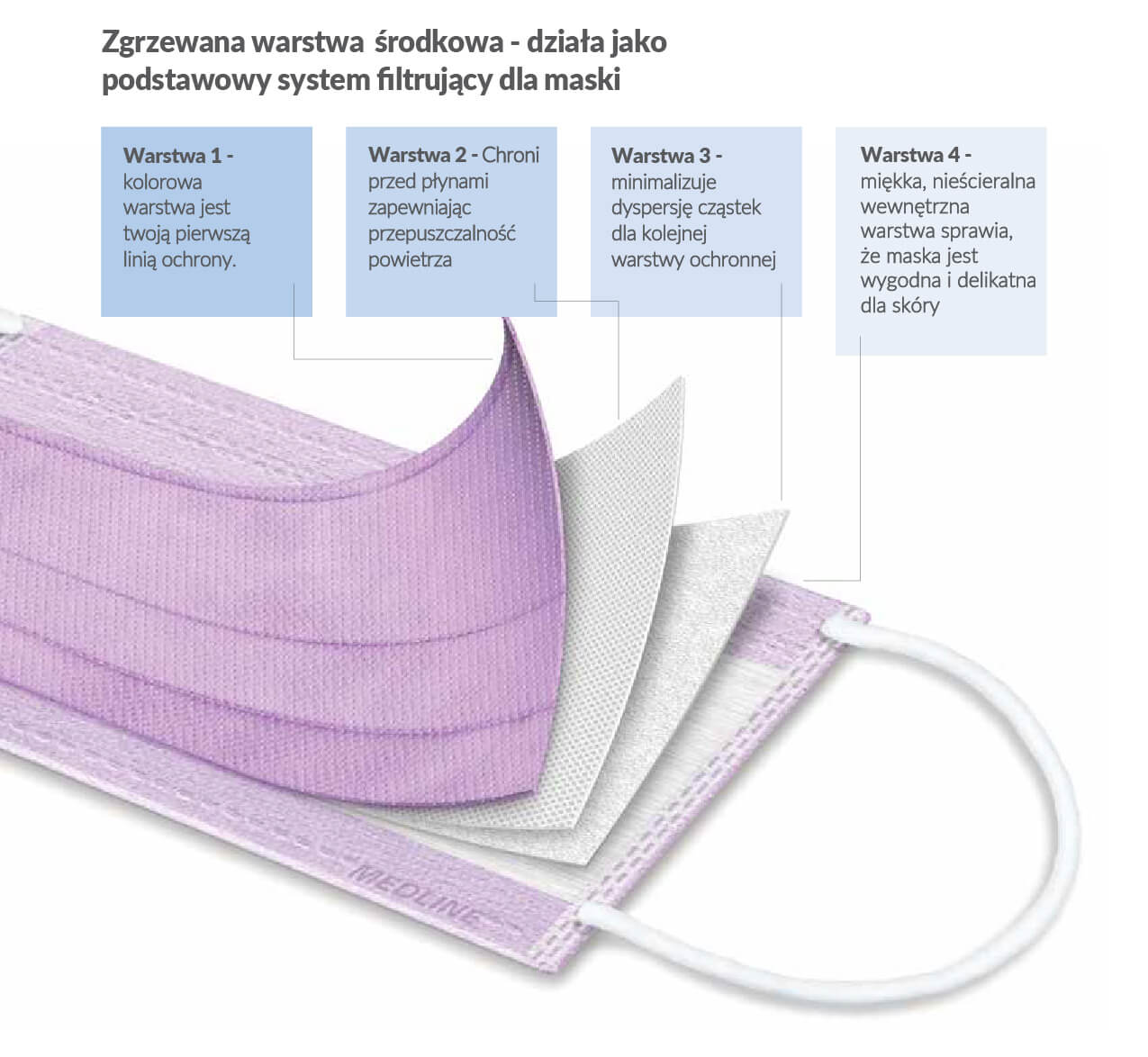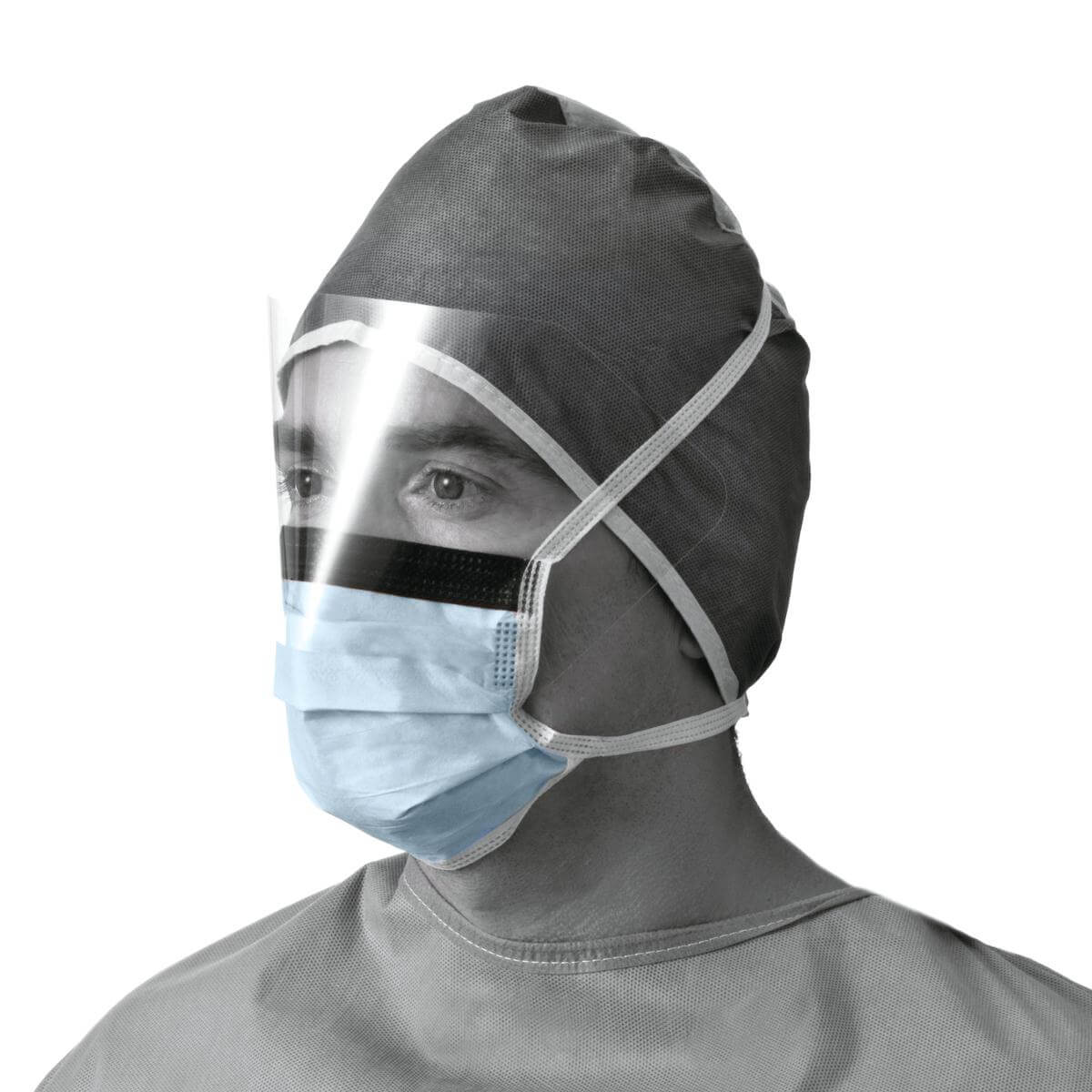Skamex S.A.
Summary
Surgical Masks Surgical masks are a fundamental equipment in every healthcare facility. They effectively reduce the risk of infection by bacteria and viruses transmitted via droplets. Various models are available on the market, differing in construction and materials used. This allows medical professionals to successfully select the appropriate mask for their needs and the medical procedures they are currently performing.
Maski chirurgiczne – skuteczność ochrony
Surgical masks, often also referred to as “medical masks” or “hygienic face masks,” are a fundamental element of protection for both medical staff and patients against bacteria and viruses transmitted via droplets. For this reason, they are standard equipment in every surgical room or treatment office.
However, in the current pandemic era, medical masks are also visible in public spaces. Due to the introduced legal regulations, everyone must wear them in premises that are publicly accessible. This mandate applies to, among others, shopping malls, public restrooms, bars, stores, schools, and government administration buildings.
According to studies conducted for the WHO, wearing a surgical mask can reduce the risk of infection with a virus such as SARS-COV‑2 from 90% to 30% [1]. Particularly, those who are already sick and spreading pathogens should wear them. Selected types of masks are capable of filtering up to 95% of pollutants and microorganisms. This significantly reduces the amount of viruses in their environment, thereby improving the safety level of bystanders.
Medical Mask and Its Layers
Standard surgical masks are usually made up of four layers. Each of them, in addition to filtering air, serves a slightly different function.

Effectiveness of Filtration in Medical Masks
To determine the effectiveness of filtration in surgical masks, similar to medical gowns or gloves, they are evaluated by ASTM (American Society for Testing and Materials). This institution tests a range of parameters under laboratory conditions and, based on the results, determines which standards each product meets. Their list can be found on the official website of the organization (click).
ASTM evaluates parameters such as: solid particle filtration capability, bacterial filtration capability, differential pressure, and air permeability (breathability). Each mask model undergoes an individual assessment.
Having a certificate of compliance with ASTM standards guarantees the effectiveness of the protection of hygienic masks. At the same time, it classifies them as a fully-fledged medical product.
What are surgical masks made of?
Modern medical masks are made from materials that not only provide effective protection against pathogens but also ensure a proper level of comfort while wearing them. In high-quality products from renowned manufacturers like Medline, the following materials are used:
- Celuloza Cellulose – This is a gentle and natural material used in both the outer and inner layers of the mask. It is the layer that comes into contact with the skin. Therefore, it is characterized by its softness. It does not cause abrasions and irritations.
- Polipropylen typu Spundbond – to tworzywo sztuczne, które stosowane jest w podszewkach maseczek na twarz. Pełni funkcję dodatkowej warstwy ochronnej, która filtruje powietrze. Może mieć jednak kontakt ze skórą, dlatego również jest miękkie i delikatne.
- Zgrzewany polipropylen Meltblown Polypropylene – A synthetic material that, due to thermal processing, features high fiber density. This makes it excellent as a filtering element. It is most commonly used in the outer layer of the mask.
- Zgrzewana warstwa środkowa The welded middle layer – this is the actual filter. Different materials are used for its production, both natural and synthetic, depending on the purpose and type of the mask. It effectively stops all dangerous pathogens, ensuring that the surgical mask effectively protects both the wearer and others in their vicinity.
Water Resistance of Surgical Masks
In operating rooms and treatment offices, doctors and nurses often come into contact with blood and other fluids that may contain viruses and bacteria. If these fluids enter the eyes or mouth, it can result in infection with serious diseases. For this reason, it is very important to protect medical personnel in such situations.
This is precisely why water-resistant medical masks were developed. Most often, their outer layer is made of cellulose, which is covered with a hydrophobic layer. As a result, no liquids can penetrate it.
The water resistance of surgical masks is determined by three levels.
- Level 1 – Resistance to a small amount of fluids
- Level 2 – Resistance to a moderate amount of fluids
- Level 3 – Resistance to a large amount of fluids
Hygienic face masks, however, protect a very limited area: the mouth and nose. Therefore, the next step in their development was to enhance them with an additional eye shield made of flexible, synthetic material. To prevent fogging, this shield is often coated with a special anti-fog coating. Additionally, surgical masks themselves often have a special foam that seals their connection with the face, preventing water vapor from the exhaled air from accumulating on the shield.
Fastening of Medical Masks
To fulfill their protective role, surgical masks must fit well to the face. For this reason, the method of their fastening is one of the most important aspects.
Wyróżniamy trzy typy mocowania maseczek:
- Wiązane troki Tied Ties – These are strips (usually made of cellulose) that are tied behind the head. They allow for comfortable adjustment of the mask according to the expectations of medical professionals.
- Gumki mocowane za uszami – umożliwiają łatwe i szybkie mocowanie maski, nawet jedną ręką.
- Gumki mocowane za głową – stanowią rozwinięcie poprzedniego rozwiązania. Zapewniają skuteczność mocowania porównywalną z klasycznymi trokami, łącząc szybkość i wygodę zakładania gumek.
Special masks
In addition to classic surgical masks, there are also special masks available. These include:
- N95 Respirator Masks. These are special masks equipped with a fabric filter that effectively stops solid particles. They are often called “anti-smog masks” because they show high efficiency in stopping dust particles.
- Duckbill” type masks. This name comes from their distinctive elongated and flattened shape. These masks have an additional breathing chamber that isolates the nose and mouth from the material, making breathing (especially for those with respiratory diseases) and speaking easier.
- Masks with Patterns. These are primarily used in pediatric wards. Colorful patterns soften the appearance of medical staff, reducing stress and fear in young patients.
Bibliography
- World Health Organization, Advice on the use of masks in the context of COVID-19, rapot z 5.04.2020.
 Polski
Polski
